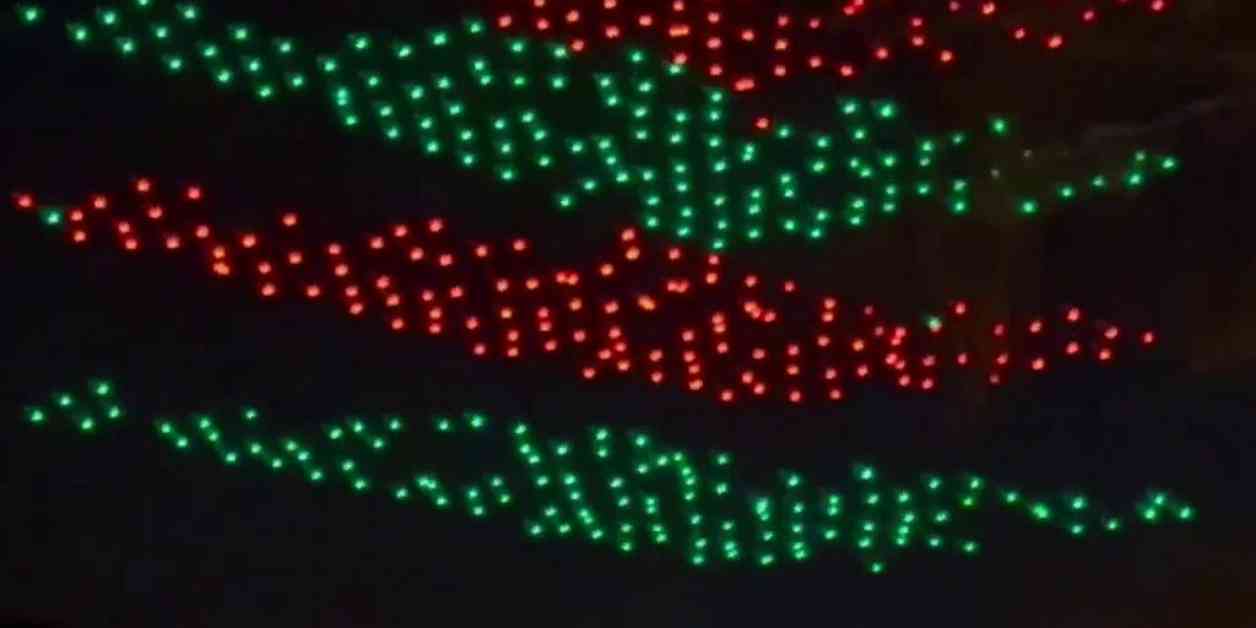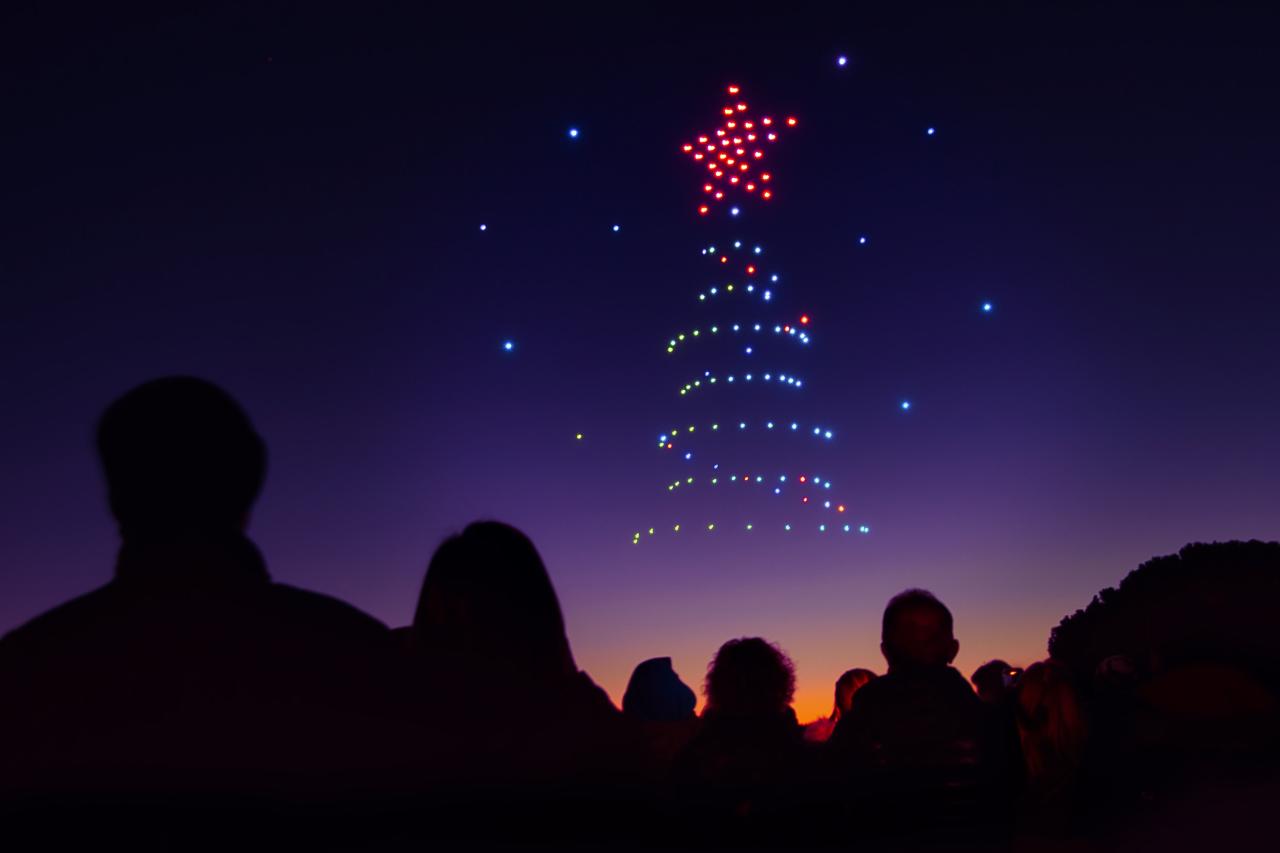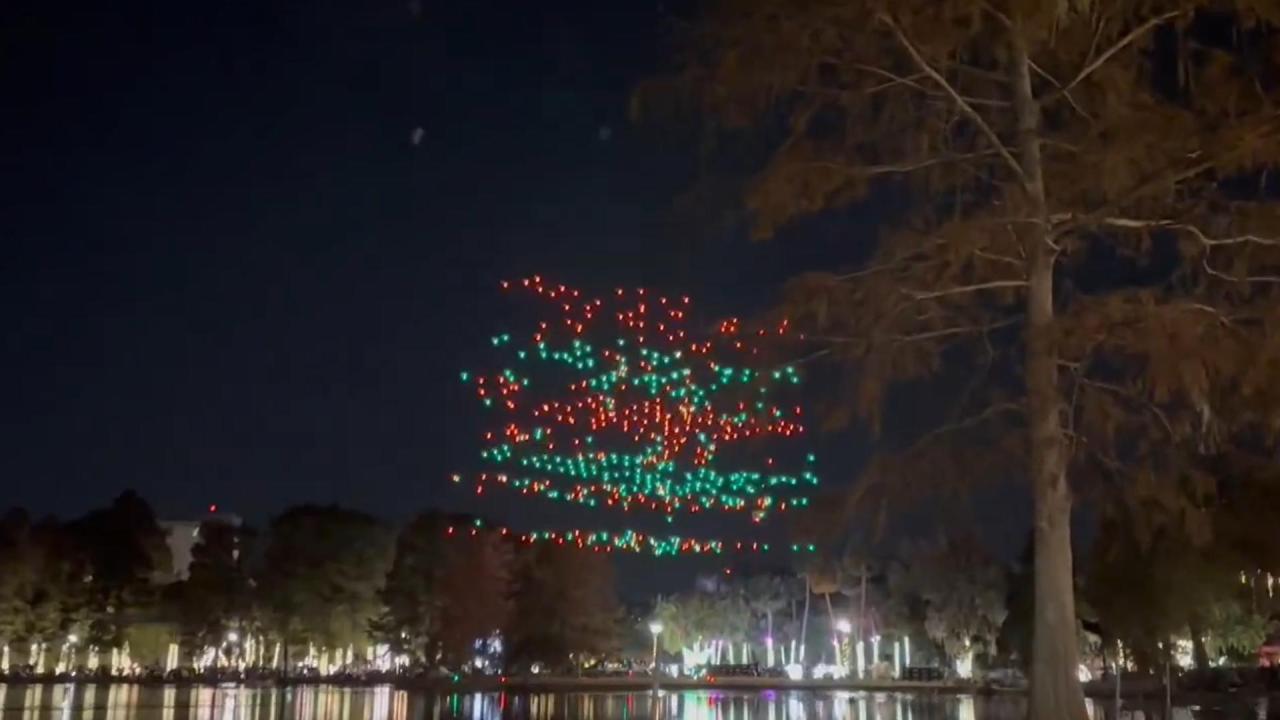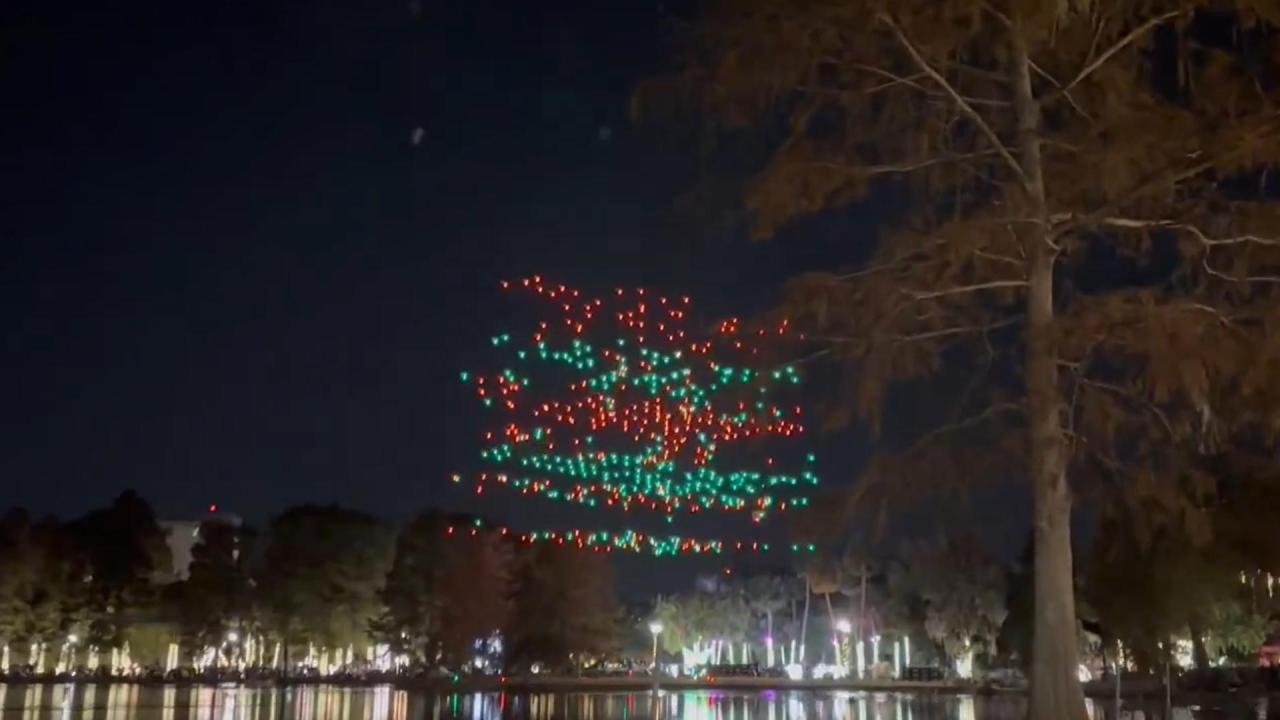Drone show accidents, while relatively rare, highlight the complex interplay of technology, human factors, and environmental conditions. These spectacular displays of aerial artistry often involve numerous drones operating in close proximity, demanding meticulous planning and flawless execution. A single malfunction can cascade into a significant incident, underscoring the need for robust safety protocols and ongoing technological advancements.
This analysis delves into the various causes of drone show accidents, exploring everything from mechanical failures and software glitches to human error and adverse weather. We will examine existing safety regulations, investigate real-world case studies, and propose strategies for mitigation and future prevention. The goal is to provide a comprehensive understanding of the risks involved and to offer actionable insights for enhancing the safety and reliability of drone shows globally.
Drone Show Accidents: A Comprehensive Analysis

Drone shows, while spectacular, present inherent risks. Understanding the various factors contributing to accidents is crucial for enhancing safety protocols and preventing future incidents. This analysis delves into the types of accidents, contributing factors, safety regulations, technological failures, and post-accident procedures, ultimately aiming to improve the safety and reliability of drone light shows.
Types of Drone Show Accidents
Drone show accidents can be broadly categorized into malfunctions, collisions, and uncontrolled flight. These accidents involve various drone types, each with unique vulnerabilities, and are often exacerbated by environmental factors.
| Type of Accident | Cause | Frequency | Safety Measures |
|---|---|---|---|
| Malfunction (e.g., motor failure, battery drain) | Manufacturing defects, inadequate maintenance, extreme weather conditions | High; often leading to single drone incidents | Redundant systems, rigorous pre-flight checks, robust battery management |
| Collision (drone-to-drone or drone-to-object) | GPS signal interference, pilot error, inadequate spacing, poor programming | Moderate; can cause cascading failures | Advanced collision avoidance systems, precise flight planning, real-time monitoring |
| Uncontrolled Flight | GPS signal loss, software glitches, loss of communication with the controller | Low; often resulting in significant damage | Emergency landing protocols, fail-safe mechanisms, multiple communication channels |
Larger, heavier drones are generally more susceptible to mechanical failures, while smaller, lighter drones might be more vulnerable to wind and GPS interference. Environmental factors such as strong winds, rain, and fog significantly impact flight stability and control, increasing the likelihood of accidents.
Safety Regulations and Protocols
International regulations regarding drone shows vary considerably. Some countries have comprehensive guidelines, while others are still developing their frameworks. Examples include specific licensing requirements for operators, limitations on flight altitude and distance, and mandatory safety briefings.
An improved safety protocol should incorporate redundant systems at every level. This includes multiple GPS receivers, backup communication links, and emergency landing mechanisms. Fail-safes should be designed to automatically initiate safe landing procedures in case of system failures. Real-time monitoring and remote kill switches are essential components of any robust safety system. The effectiveness of safety technologies like autonomous collision avoidance systems is constantly improving, but requires careful calibration and testing for optimal performance.
Human Error in Drone Shows

Human error is a significant contributor to drone show accidents. This includes pilot mistakes, such as incorrect programming or improper flight maneuvers, as well as inadequate training and supervision.
Drone show accidents, while rare, highlight the inherent risks involved in large-scale drone operations. A recent incident underscores the need for robust safety protocols; consider, for instance, the details surrounding a florida drone accident which involved a malfunctioning system. Such events serve as crucial reminders for organizers to prioritize thorough planning and risk mitigation in future drone shows to prevent similar occurrences.
Operator fatigue and stress can significantly impair judgment and decision-making, increasing the risk of errors. A comprehensive checklist for drone show operators should include pre-flight inspections, communication checks, system tests, weather assessment, and emergency procedures. Regular training and simulations can help mitigate the risks associated with human error.
Technological Failures, Drone show accident
Technological failures can range from simple battery drain to complex software glitches. GPS signal loss, a common problem, can occur due to interference from buildings, mountains, or other electronic devices. This loss can lead to erratic flight patterns and collisions.
| Technological Failure | Potential Consequences | Impact on Show Safety |
|---|---|---|
| Battery Failure | Sudden power loss, uncontrolled descent | High; potential for drone crash and damage |
| GPS Malfunction | Loss of position awareness, erratic flight | High; potential for collisions and uncontrolled flight |
| Software Glitch | Unpredictable behavior, system crashes | Moderate to High; depends on the severity and nature of the glitch |
Understanding the potential causes and consequences of these failures is critical for developing effective mitigation strategies.
Post-Accident Procedures and Investigations

Thorough investigation is vital after any drone show accident. This involves securing the accident site, recovering flight data, interviewing witnesses, and analyzing drone components. Best practices include meticulous documentation of all findings and a comprehensive report detailing the root causes of the accident.
Analyzing accident data often involves reviewing flight logs, GPS tracks, and sensor data. This helps identify patterns and pinpoint the specific events leading to the accident. A step-by-step process might involve data extraction, data cleaning, correlation analysis, and root cause identification.
Mitigation Strategies and Future Prevention
Proactive measures are essential for preventing future accidents. These include thorough pre-flight checks, regular maintenance schedules, and the use of advanced simulations for operator training. Continuous training and education are paramount for maintaining operator proficiency and awareness of best practices.
Drone show accidents, while rare, highlight the inherent risks in large-scale aerial displays. Understanding these risks is crucial, and examining incidents like the one detailed in this report on a florida drone accident can offer valuable insights. Such investigations help improve safety protocols and prevent future mishaps in drone shows worldwide.
Technology plays a significant role in enhancing safety. Autonomous collision avoidance systems, improved GPS technologies, and enhanced communication protocols can all contribute to a safer environment. Redundancy in systems and fail-safe mechanisms should be prioritized to minimize the impact of single-point failures.
Case Studies of Drone Show Accidents
Analyzing past incidents offers valuable insights into preventing future occurrences. While specific details of accidents are often confidential for legal reasons, general patterns can be extracted from public reports.
- Case Study 1 (Hypothetical): Date: October 26, 2023; Location: Dubai; Cause: Software glitch causing multiple drones to lose control; Consequences: Minor property damage, no injuries. Future prevention: Enhanced software testing and redundancy measures.
- Case Study 2 (Hypothetical): Date: March 15, 2024; Location: Las Vegas; Cause: Strong winds exceeding operational limits; Consequences: Several drones damaged, show cancelled. Future prevention: Improved weather monitoring and stricter wind speed limits.
- Case Study 3 (Hypothetical): Date: June 8, 2024; Location: London; Cause: Operator error resulting in a collision; Consequences: Several drones damaged, slight delay to the show. Future prevention: More rigorous operator training and simulations.
Illustrative Examples of Accident Scenarios

Visualizing potential accident scenarios aids in understanding the risks involved.
- Scenario 1: A sudden power surge causes a cascading failure in a cluster of drones, resulting in a chaotic descent and collision with each other. The sight of multiple drones falling from the sky, the sounds of motors sputtering and colliding, potential damage to surrounding structures and potential injuries to spectators.
- Scenario 2: A strong gust of wind knocks a drone off course, causing it to veer into a nearby building. The visual of a drone impacting a building, the sound of shattering glass, and the potential for structural damage and injury.
- Scenario 3: A GPS malfunction causes a drone to drift unpredictably, nearly colliding with other drones and spectators. The visual of a drone drifting erratically, the sounds of concerned murmurs from the crowd, and the near-miss resulting in potential panic and injury.
Ultimately, ensuring the safe and successful execution of drone shows requires a multi-faceted approach. This involves not only rigorous adherence to safety regulations and protocols but also a commitment to continuous improvement in technology, operator training, and pre-flight checks. By learning from past accidents and proactively addressing potential vulnerabilities, the industry can strive towards a future where these breathtaking spectacles are enjoyed without the risk of unforeseen incidents.
The integration of advanced safety technologies and a culture of proactive risk management will be crucial in achieving this goal.
Q&A: Drone Show Accident
What is the typical insurance coverage for drone show operators?
Insurance coverage varies widely depending on the operator’s location, the scale of the show, and the specific policy. It’s crucial to secure comprehensive liability insurance that covers potential damages and injuries.
How are drone show accidents investigated internationally?
International investigation standards vary. Many countries follow similar principles focusing on data recovery, witness testimonies, and technical analysis to determine root causes. However, specific regulations and reporting requirements differ.
Drone show accidents, while rare, highlight the inherent risks involved in these spectacular displays. The recent incident underscores the need for rigorous safety protocols, a point further emphasized by the scale and complexity of events like the orlando drone show , which showcases both the potential and the responsibility associated with this technology. Ultimately, preventing future accidents requires continuous improvement in safety measures and operational planning.
What are the long-term career implications for drone pilots involved in accidents?
The consequences can range from temporary suspension of licenses to permanent grounding, depending on the severity of the accident and the pilot’s culpability. Reputational damage can also impact future employment prospects.
